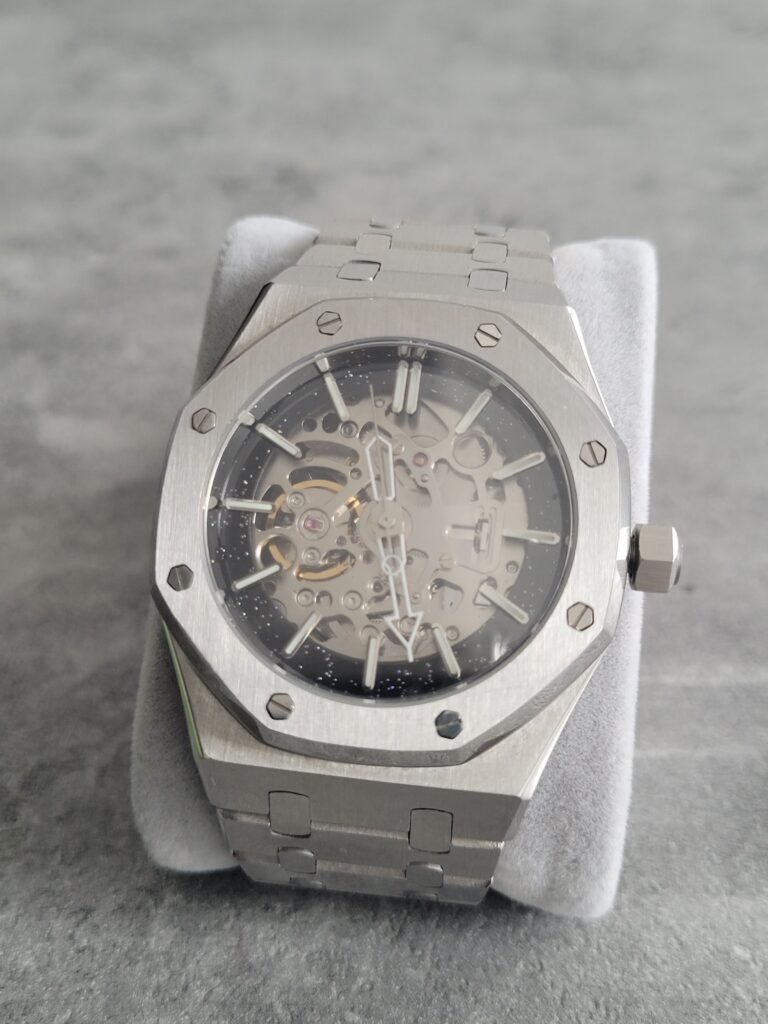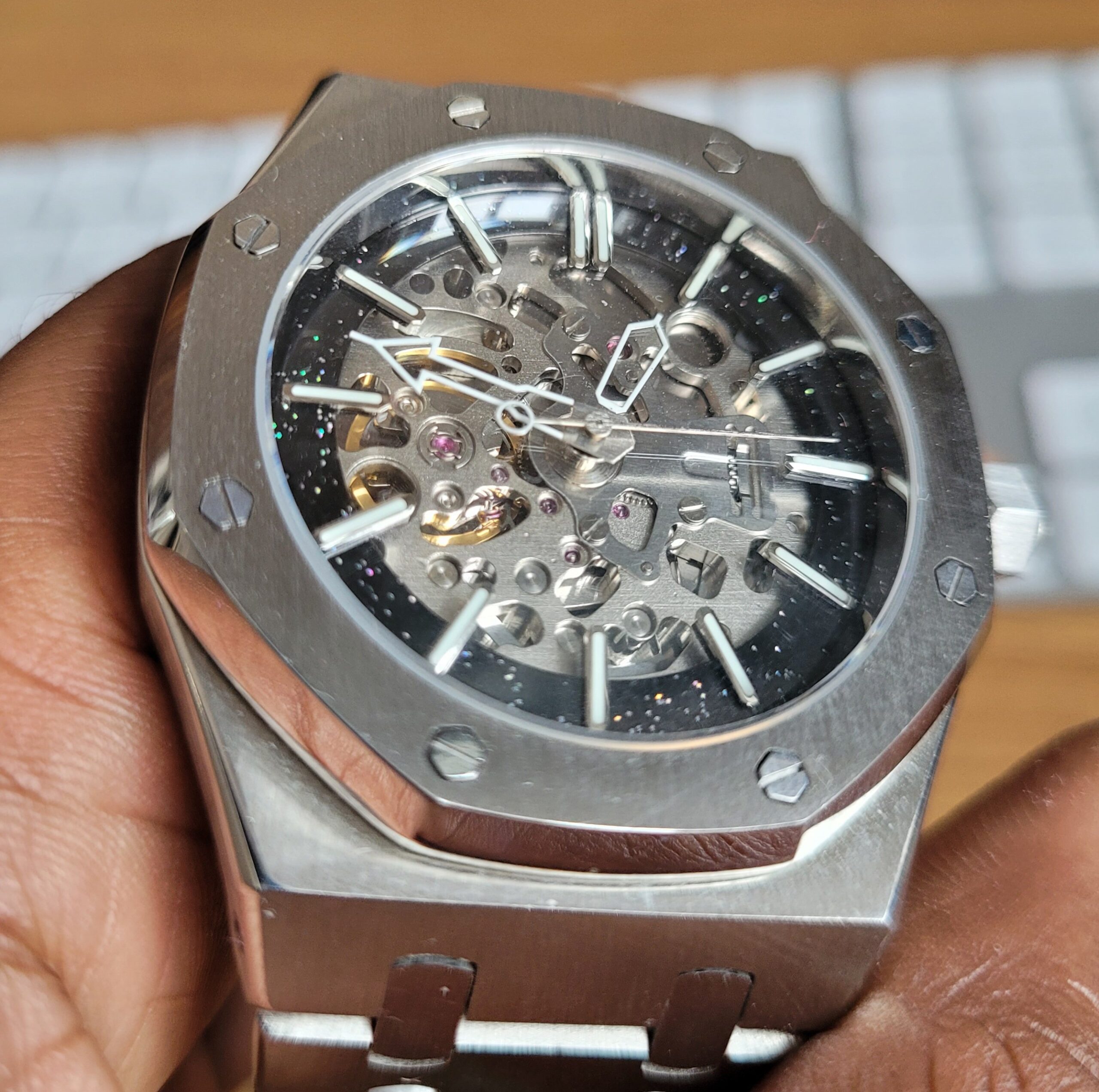I love learning about the history behind horology and the varied methodology and styles used to produce a timepiece, for me, however, the skeleton movements arouse the most curiosity. The aesthetic appeal of seeing the inner workings such as the gears and main spring moving can not be ignored. The tradition of the Skeleton movement goes back to the 18th century when it allowed the watchmaker to show the craftsmanship and skill required to assemble the movement.

Having put together several watches using Seiko movements from their NH range…. it was only a matter of time before I was going to put together a skeleton watch when I discovered the NH70 movement. Particularly loved how you can see right through the movement I knew I had to build it.
 Sourcing the skeleton hands seemed an obvious choice though I was limited in what I could use to place hour markers, Aftermarket dials that have an exposed centre (not including the open-heart dials)are not that plentiful. This one had colourful “sparkles” that catch the light at certain angles. Perhaps I will commission a custom one later if I get bored with this.
Sourcing the skeleton hands seemed an obvious choice though I was limited in what I could use to place hour markers, Aftermarket dials that have an exposed centre (not including the open-heart dials)are not that plentiful. This one had colourful “sparkles” that catch the light at certain angles. Perhaps I will commission a custom one later if I get bored with this.
I used the AP homage case, as I felt the brushed frontage provided a subtle contrast to the smooth finished metals of the movement’s main plate and bridge.

I’ve yet to decide how to decorate the rear of the movement. The rotor fitted does have a subtle “cotes de Geneve” finish to it, so perhaps subtly is the way to go, I may try black polishing the rotor edges or maybe use heat and blue the screws (replacing the screws with the damaged heads).
Parts list:
- Tmi NH70a Movement: Ali Express
- Case: Ali Express
- Hands: Ali Express
- Dial: Ali Express: Ali Express